
Recently, I have read and delved a lot into the world of retail, e-tail and retail experiences and business models. As a result I noticed a direct comparison of how supermarkets have evolved and how digital publishing has followed a similar path. Out of these similarities some basic guidelines can be derived.
Target(ing)

Imagine the scene…
A few years ago, an irate father storms into his local Target Supermarket in Minnesota. In his hand he clenches a book of money-off coupons for baby products. “She is only in high school and you are sending her baby products, are you encouraging her to get pregnant?”, he exclaimed. The store manager apologises and averts the unwanted attention. A few days later the store manager calls the father to reiterate his apologies.
The father responds unexpectedly, “It is I who should apologise”, he says.
It turned out that his high school daughter was indeed pregnant, but how did Target know, when not even the family knew?
Target had been busy developing their predictive data modelling so well that they could estimate when someone was pregnant.
The analytics model noticed when someone added a combination of 25 products, including vitamins, cocoa butter, large clothing amongst others. The model was accurate enough to estimate that they were pregnant.
That is when they received the coupons for baby and pregnancy goods in the post.

Ms. Dunn and Mr. Humby
In 1994, following a presentation delivered to Tesco board directors, an awkward silence filled the boardroom.
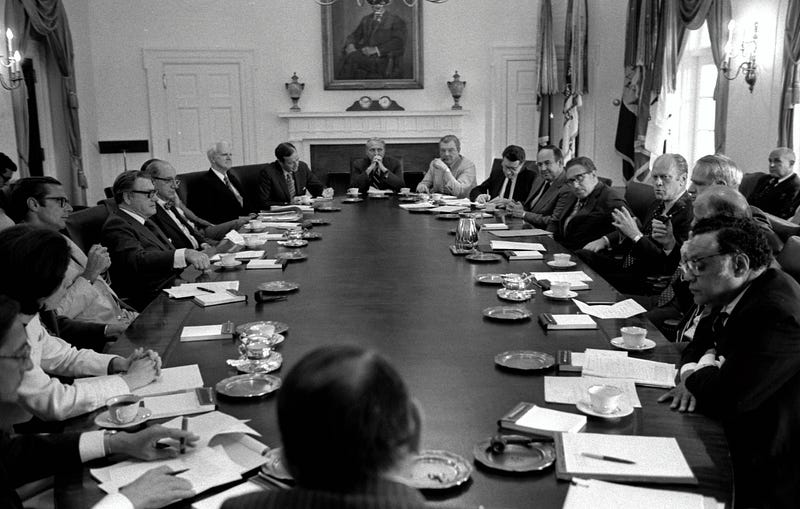
According to boardroom folklore, after clearing his throat, the then-chairman, Lord MacLaurin responded on behalf of the board.
“What scares me about this is that you know more about my customers after three months than I know after 30 years.” — Lord MacLaurin (Tesco Chairman in 1994)
Remember that this was back in the early 1990’s Today, we hear a lot about data, big and small. It was very different then and if anyone had to foresight to invest, they gained huge competitive advantage.
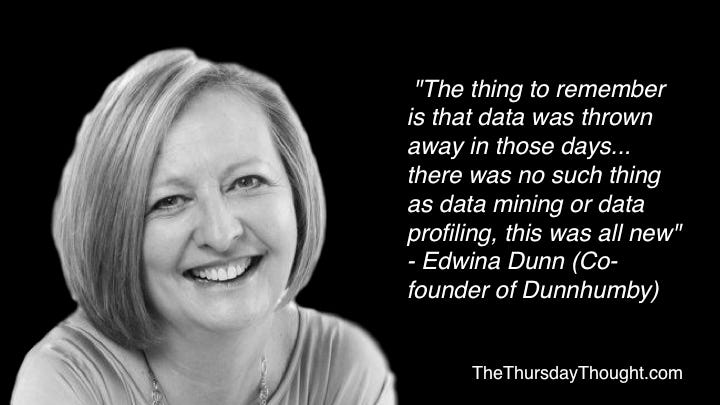
In a data-driven world data is now the price of admission. However, so many companies who should have embraced this are sitting on their hands.
Companies need to jump on to the data spectrum. They can decide where they want to be on that spectrum, do they want to be 1990’s small data or in the predictive-data-modelling world of Target.
Guideline 1: Know your Audience and Get on the Data Spectrum
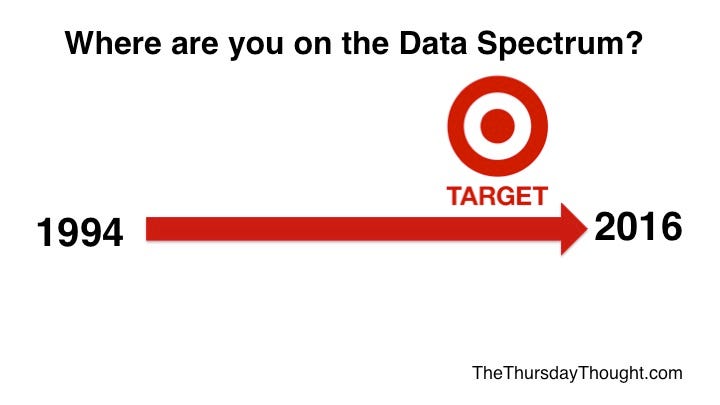
Consolidation
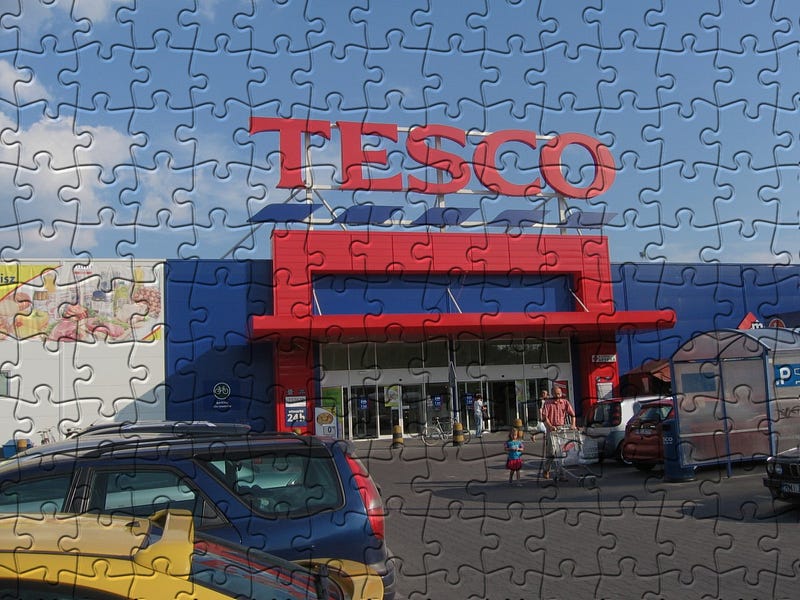
In the early days of supermarket retailing, there was huge fragmentation. Back then, smaller shops and smaller supermarkets stood a chance against the supermarkets. Local shops were strong as they relied on direct relationships with their customers. The shopkeepers knew the name of their customers, they knew their families, they probably even went to church together.
As time went by, bigger supermarkets created both scale and simplicity for their customers. They built an ecosystem. They offered free parking and better amenities. Your supermarket was a one-stop shop versus stopping in half a dozen shops. The mass scale led to lower prices and wider choice. Larger supermarket chains acquired competitors and eventually smaller retailers could no longer compete.
Content Consolidation

In a similar vein to retail consolidation in the early days of digital publishing there were lots of publishers, lots of smaller niche sites.
Meanwhile, the platforms such as Facebook saw an opportunity to become “Content Supermarkets”. What if they could do the same as supermarkets and make it ultra easy to get everything you need in one place. They would make it seamless, they would build a place where everyone would congregate. They would build on network effects, habit and FOMO (fear of missing out) and they would be laser focussed on user experience.
Facebook didn’t have to buy the competitors because the competitors were more like partners. The partnership was based on: I build the audience for “us” and you create the content, you can then serve that content to “our” audience. When it felt imbalanced and I am now making huge revenues and you are struggling I will give you a revenue share — but only on content you directly publish on my platform, no more linking back to your own site.
Supermarkets and Product Promotion
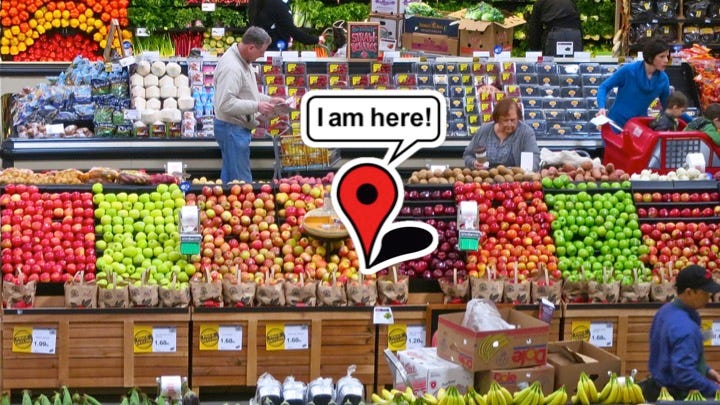
You know those elaborate product displays or premium product placements you see in your local supermarket? For the most part, that is paid for and paid for handsomely by the brand or producer. Those coupons and special offers you receive in the post or as part of your loyalty club? Paid for too!
Supermarkets have been very early to realise that knowing their customers and relying on data to understand premium positioning of products not only gave them a chance to shift more products, but also gave them an opportunity to sell premium placement to clients. Obviously clients who have also benefitted from product consolidation have the bigger budgets to spend on optimising their product positioning in the store. This is another reason we are seeing a slow down in traditional advertising, the supermarket is now sucking up some of that budget.
Content boosting is product placement

I see content advertising no different than product placement in supermarkets. Facebook created optimal conditions for someone to “buy”, “spend time” and “hang out” and to boot wrapped it all in data to display what drives most engagement (digital content’s equivalent of a sale).
Like producers with the supermarkets — to get prime positions.
Rule 2 is that today we must pay.
Proving your point with Data or Paying the Ferryman
One of the beautiful moves played by some retailers is as follows.
Big Retailer: “We have several offers of similar products to yours, what makes yours different?, We need to see some hard data as to why your are the best?”
Brand/Producer: “Ok, we will start a project and come back with a rationale”
Big Retailer: “We own (entirely or part of) such a company (Dunnhumby for example), We highly recommend you use them as it will make it easier for us to understand their end proposal. (Likewise those sampling and promotional companies who offer you free samples of sausages — they are partly or wholly owned by retailers).
Facebook offers fantastic analytics tools, while it is not paid for (yet) I feel in time it will drive so many aspects of the Facebook ecosystem.
Content creators must now pay to reach their audiences on Facebook. This needs to be used wisely, for example if a piece of content is organically doing well, that is the time to throw some money behind it.
Your Product is the Marketing — Great Brands have Great Stories
To stand out, whether that be on a packed supermarket shelf or a packed Facebook feed, your brand or product needs to be “remark-able”. Seth Godin and Ted Rubin talk about this, it means that your brand/product/content is so good it elicits a remark.
Your product needs to be so good, so easy to use that it is simply better than the competition.
On top of his the brand needs to have a story, it needs to share its purpose. Take for example the website TOMS Shoes:
The TOMS® Story: While traveling in Argentina in 2006, TOMS Founder Blake Mycoskie witnessed the hardships faced by children growing up without shoes. Wanting to help, he created TOMS Shoes, a company that would match every pair of shoes purchased with a new pair of shoes for a child in need. One for One®.
If TOMS shoes were on a packed supermarket shelf they would now stand out to me. They would be “remarkable”, they would have a story.
Content needs to be treated the same. It needs to cater for every aspect that a user is looking for. Content needs to be superfast, searchable, shareable and snackable when required. It needs to be framed by data and it needs to portray a story.
Guideline 3: Content needs to be “remark-able”, it needs to have an authentic story, it needs to have a “Wienie” and stand for something and it needs to have an amazing user experience..
— — — — — — — — — — — — — — — — — — — — — — —
On this weeks innovation show, we talk to Simon Cocking of Irish Tech News. We talk about the rules of digital content publishing and beyond.
We have a fascinating chat with David Hayes of In the Company of Huskies
MD of the IRDG Denis Hayes fills us in on the latest IRDG event “Unleashing the Power of Innovation”.